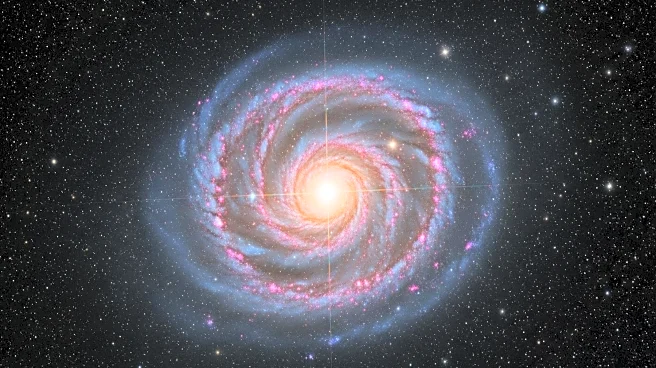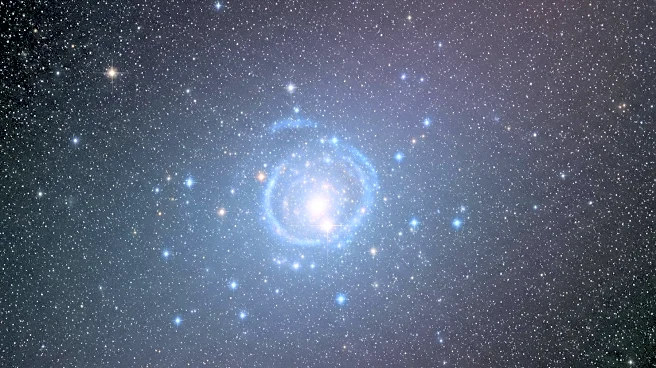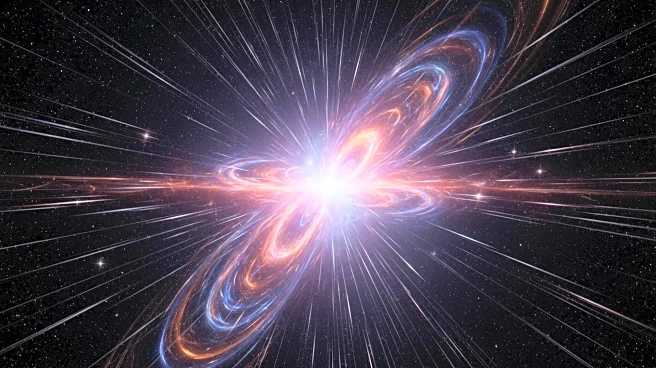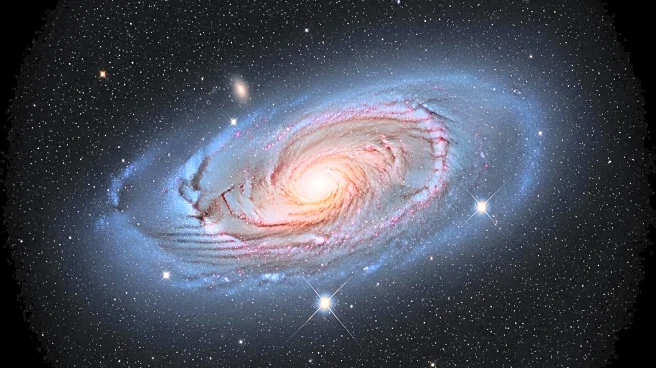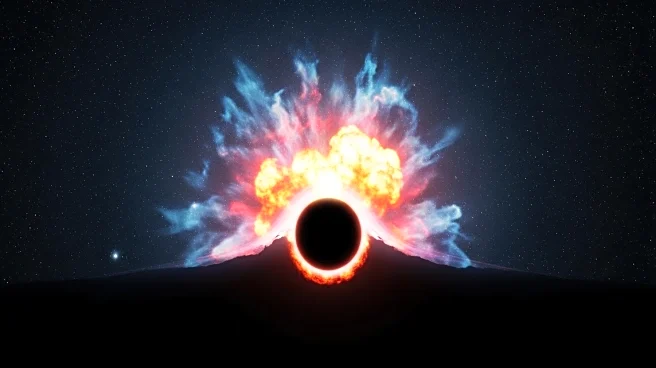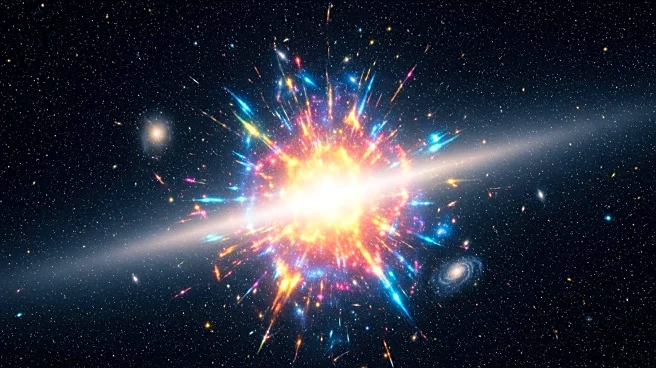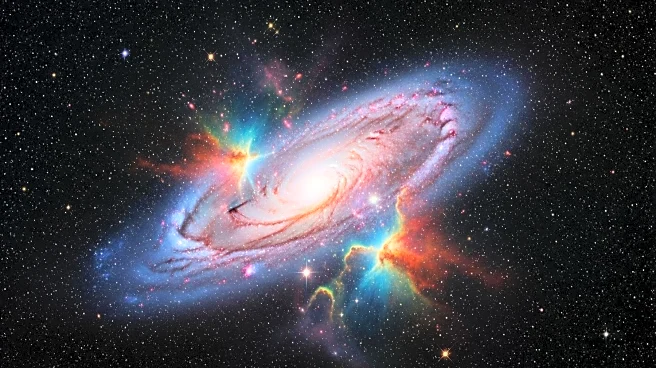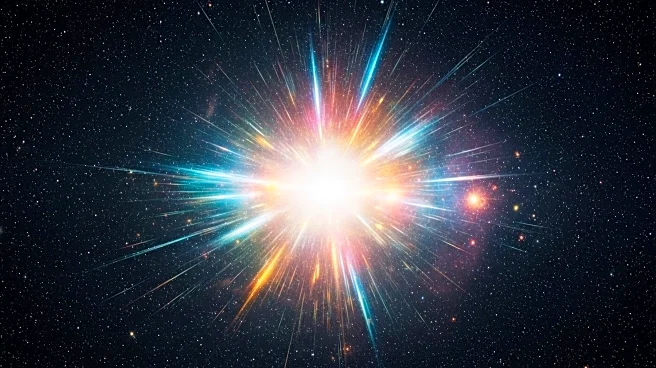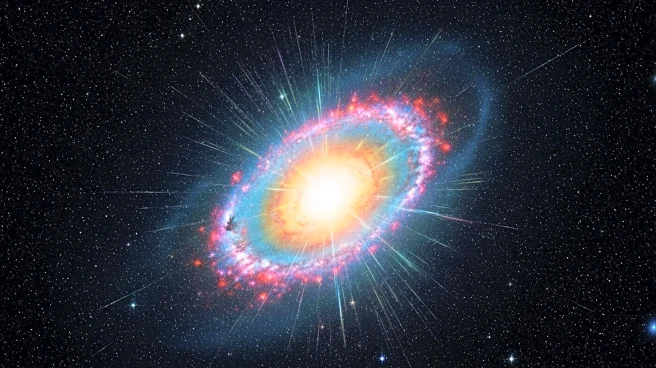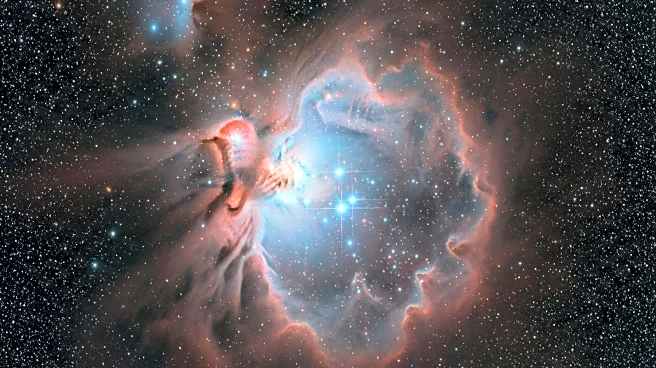What's Happening?
The discovery of HE0450-2958, a luminous and distant active galactic nucleus (AGN) or quasar, has posed a challenge to astronomers due to the absence of a visible host galaxy. Typically, AGNs exist in the centers of massive galaxies, but preliminary images from the Hubble Space Telescope (HST) could not find a host for HE0450-2958. Further observations in infrared wavelengths suggest the presence of a host galaxy, potentially disrupted by a past collision with a companion galaxy.
Why It's Important?
Understanding the structure and behavior of AGNs is crucial for astrophysics, as they play a significant role in galaxy formation and evolution. The investigation into HE0450-2958's host galaxy provides insights into the dynamics of quasar-galaxy systems and the impact of galactic collisions. This research could refine models of AGN behavior and contribute to the broader understanding of cosmic phenomena.
What's Next?
Astronomers plan to conduct further observations to confirm the nature of HE0450-2958's host galaxy and its interaction with the companion galaxy. These studies aim to unravel the complexities of quasar-galaxy systems and improve the understanding of galactic dynamics and evolution.
